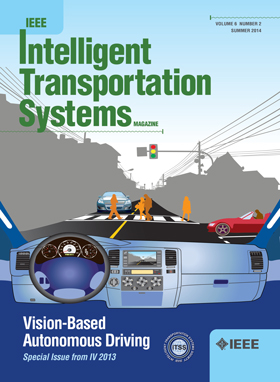The Road to Safe Automated Driving Systems: A Review of Methods Providing Safety Evidence
IF 7.9
1区 工程技术
Q1 ENGINEERING, CIVIL
IEEE Transactions on Intelligent Transportation Systems
Pub Date : 2025-01-30
DOI:10.1109/TITS.2025.3532684
引用次数: 0
Abstract
In recent years, enormous investments in Automated Driving Systems (ADSs) have distinctly advanced ADS technologies. Despite promises made by several high profile auto-makers, it has however become clear that the challenges involved for deploying ADS have been drastically underestimated. Contrary to previous generations of automotive systems, common design, development, verification and validation methods for safety critical systems do not suffice to cope with the increased complexity and operational uncertainties of an ADS. Therefore, the aim of this paper is to provide an understanding of existing methods for providing safety evidence and, most importantly, identifying the associated challenges and gaps pertaining to the use of each method. To this end, we have performed a literature review, articulated around four categories of methods: design techniques, verification and validation methods, run-time risk assessment, and run-time (self-)adaptation. We have identified and present eight challenges, collectively distinguishing ADSs from safety critical systems in general, and discuss the reviewed methods in the light of these eight challenges. For all reviewed methods, the uncertainties of the operational environment and the allocation of responsibility for the driving task on the ADS stand-out as the most difficult challenges to address. Finally, a set of research gaps is identified, and grouped into five major themes: 1) completeness of provided safety evidence, 2) improvements and analysis needs, 3) safe collection of closed loop data and accounting for tactical responsibility on the part of the ADS, 4) integration of AI/ML-based components, and 5) scalability of the approaches with respect to the complexity of the ADS.求助全文
约1分钟内获得全文
求助全文
来源期刊

IEEE Transactions on Intelligent Transportation Systems
工程技术-工程:电子与电气
CiteScore
14.80
自引率
12.90%
发文量
1872
审稿时长
7.5 months
期刊介绍:
The theoretical, experimental and operational aspects of electrical and electronics engineering and information technologies as applied to Intelligent Transportation Systems (ITS). Intelligent Transportation Systems are defined as those systems utilizing synergistic technologies and systems engineering concepts to develop and improve transportation systems of all kinds. The scope of this interdisciplinary activity includes the promotion, consolidation and coordination of ITS technical activities among IEEE entities, and providing a focus for cooperative activities, both internally and externally.
 求助内容:
求助内容: 应助结果提醒方式:
应助结果提醒方式:


